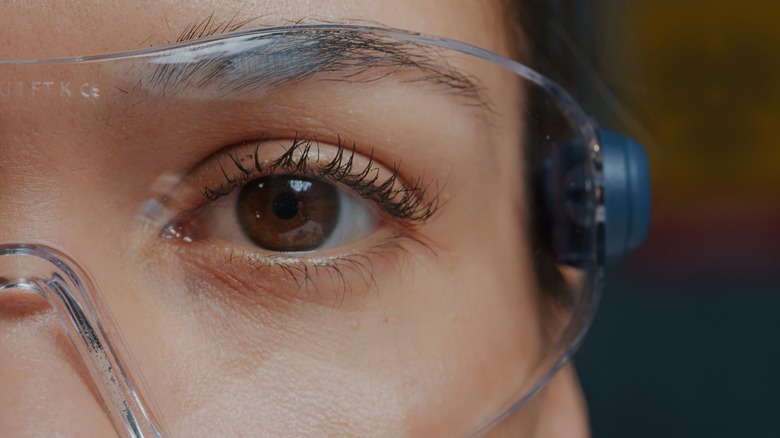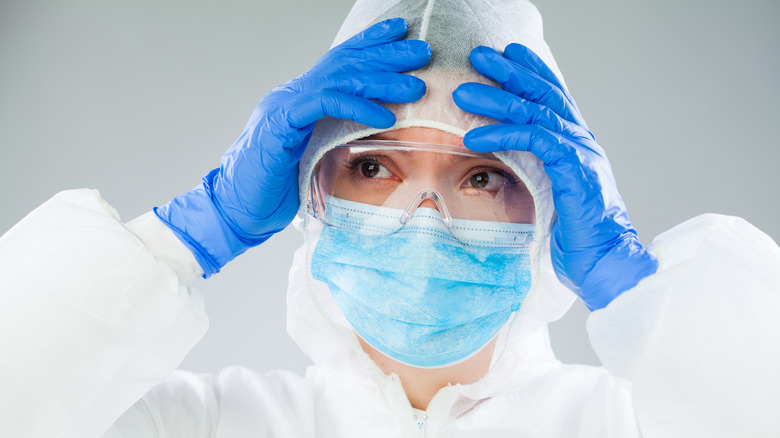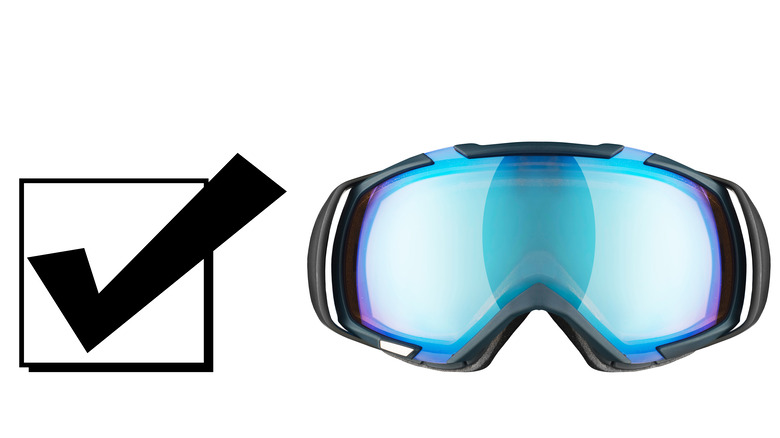The Most Important Place To Use Protective Goggles That You're Probably Missing
Americans suffer upwards of 2.5 million eye injuries each year, according to Versant Health, However, wearing protective goggles could prevent nine out of ten ocular traumas. Workplace activities are common sources of injury, as well as home carpentry and cooking. As expected, sports share some of the responsibility, as does work in the garden and heavy-duty cleaning. In fact, WebMD singles out cleaning products and fertilizers as among the most injurious to the eye.
Blunt force impact and flying particles are common causes of eye injury and irritation, along with dust, chemical burns, and overexposure to UV light. Heat, fumes, and contact with biological or infected materials can also be harmful, while seemingly innocuous actions such as lawn mowing, painting, or using a snowblower may pose a threat. Wearing goggles is a key to safety in all of those commonplace activities. Grainger identifies the main types of protective goggles as being directly or indirectly ventilated or ones that are not vented. Nowadays they can be tinted, matched to your facial structure, fitted with prescription lenses, and some even have a built-in fan for defogging purposes.
One might expect to use this personal protective equipment in the workplace or when working in the home or garden. However, safety goggles are also essential to wear in many easily overlooked situations or activities.
At the dentist and in the garden
Dental Products Report details how eye injuries can be caused by flying particles from fillings and enamel. Unprotected eyes can be burned by chemicals, and protection from airborne bodily fluids is a necessity. Wearing goggles while in the chair may also afford a security blanket for the nervous patient.
You might think you don't need protective goggles when simply gardening, but think again. Aside from blocking stones and other debris kicked up by a lawn mower or weed whacker, goggles provide protection against garden substances such as pollen and liquid irritants from plants. Plant Care Today touts their value against harmful gardening chemicals and as a means of guarding against injuries from clippers and such and even recommends protective eyewear for garden bystanders.
Moreover, Safety Glasses USA rates goggles as providing the foremost eye and facial protection during winter activities. It recommends ones with anti-fogging coatings that can withstand repeated cleanings. They also suggest equipping goggles with tinted lenses capable of warding off snow blindness and the deleterious effects of UV rays and glare and are also a good idea for winter cyclists.
Protection in sports and elsewhere
According to Phillips Safety Products Inc., most injury-causing flying objects are minuscule, so caution is the rule of the day. Wearing goggles adds an extra layer of protection in almost any circumstance. One's squash and racquetball outfits are not complete without protective eyewear. Goggles are also a good idea when target shooting, paintballing, or in any sport with a projectile, such as darts. Similarly, shooting off fireworks is an invitation to trouble and should only be done wearing goggles.
Goggles are a must when skydiving, warns Skydive Long Island. Free-falling at 120 miles per hour will, at the very least, cause your vision to blur and your eyes to dry out without the proper protection. Specialized skydiving goggles are perforated to prevent fogging. There are many regular situations in which goggles should be used but sometimes are not. For example, you should be goggled when working on cars, riding a motorcycle, or partaking in a high-speed activity like snowmobiling. Eyes also need to be shielded during procedures like laser treatment elsewhere on the body, and, of course, one should never aim a laser pointer at someone's eyes.


